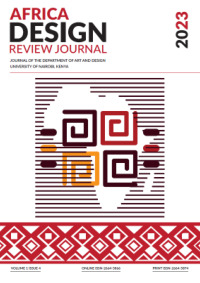Formulation of New Ceramic Glazes: Test Results Of Rock Material Found In Eastern Uganda
Abstract
Glazes are very thin glass layers or coatings used to cover clay bodies to make them impermeable, mechanically tougher, scratch-resistant, chemically more inert, and more aesthetically beautiful. Glazes are moderately cheap in price as they are produced using naturally occurring local resources that tend to be plentiful in supply, easy, and dependable to mine. Scholars have reported that the best way to learn about the formulation of ceramic glazes is to have the ingredients used in their manufacture tested. The tests carried out involve varying different amounts of the ingredients that make the glaze formulated and then fired at different temperatures in a kiln. Problem: There, however, has not been much research done on glaze formulation using geology in Uganda. According to the survey done on the three studios located within Mukono district in Uganda, geared towards outlining glaze challenges faced by practicing ceramics artists showcased the difficulties they underwent in finding glazes. Objective: The main objective of this paper was to report the test results of glaze formulation experiments done on selected natural materials found in the Mukono and Jinja districts of Eastern Uganda. Design: This paper used a Quasi-experimental research design and furthered the Solomon four-group design. Setting: The rock samples were collected from Jinja and Mukono districts, Uganda, and transported to the Kenyatta University Ceramic Studio for testing. Subject: the subject of this paper are rock samples form Mukono and Jinja districts of Eastern Uganda. Results: The paper presents the aesthetic and functional qualities of the fired glazed test bars that had been constituted with different rock samples and fired at different temperatures. The results indicate that most of the glaze samples matured better and had better aesthetic and functional qualities when fired at higher kiln temperatures of 1250ᵒC than they did at low kiln fire temperatures of 1100ᵒC. Conclusion: Glazes can be formulated using natural materials. Similarly, at the higher temperature, the glazes appeared to have a better shine and gloss finish as opposed to their aesthetic look when fired at the lower temperature. Documentation of the aesthetic and functional qualities of the new glaze is done.


